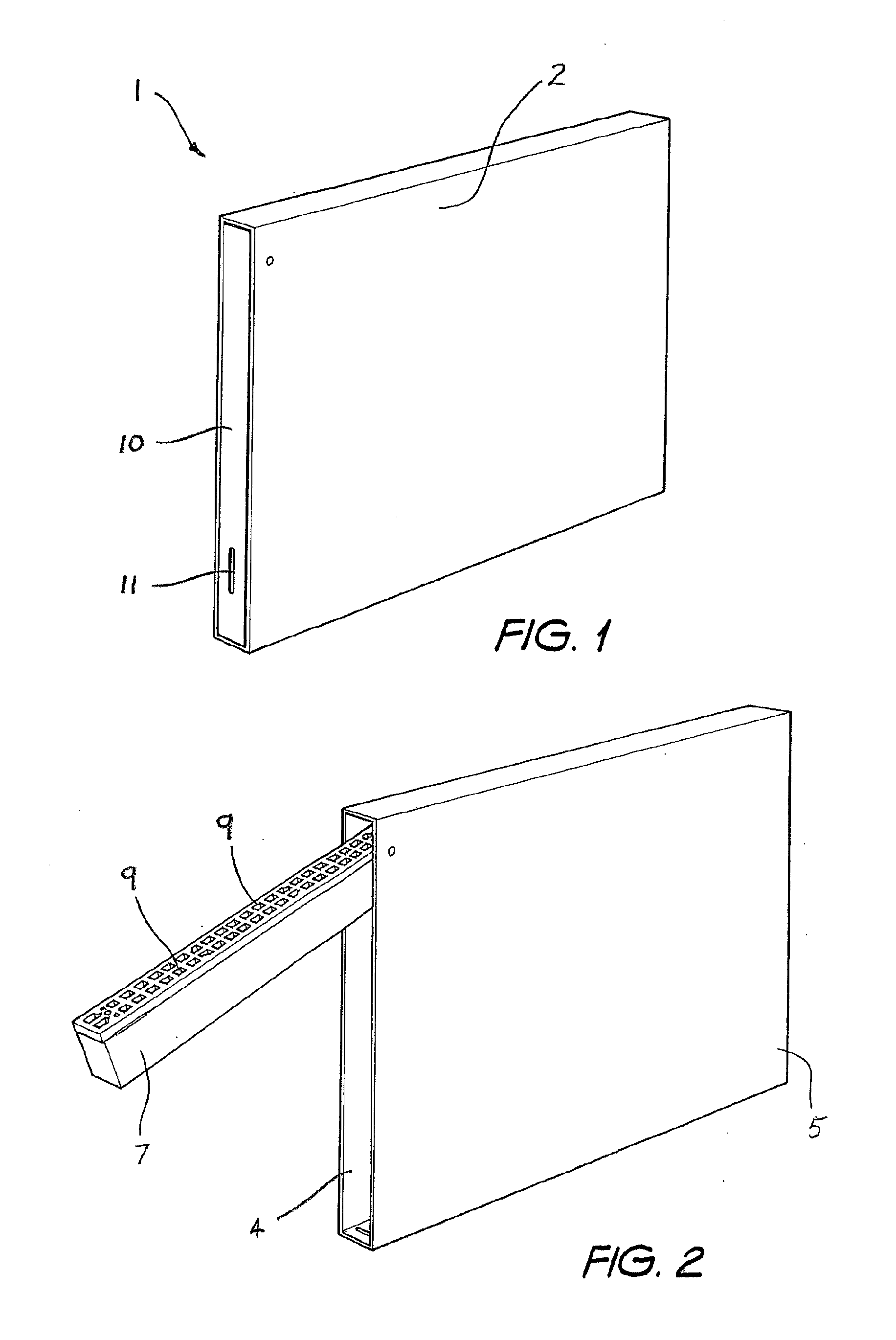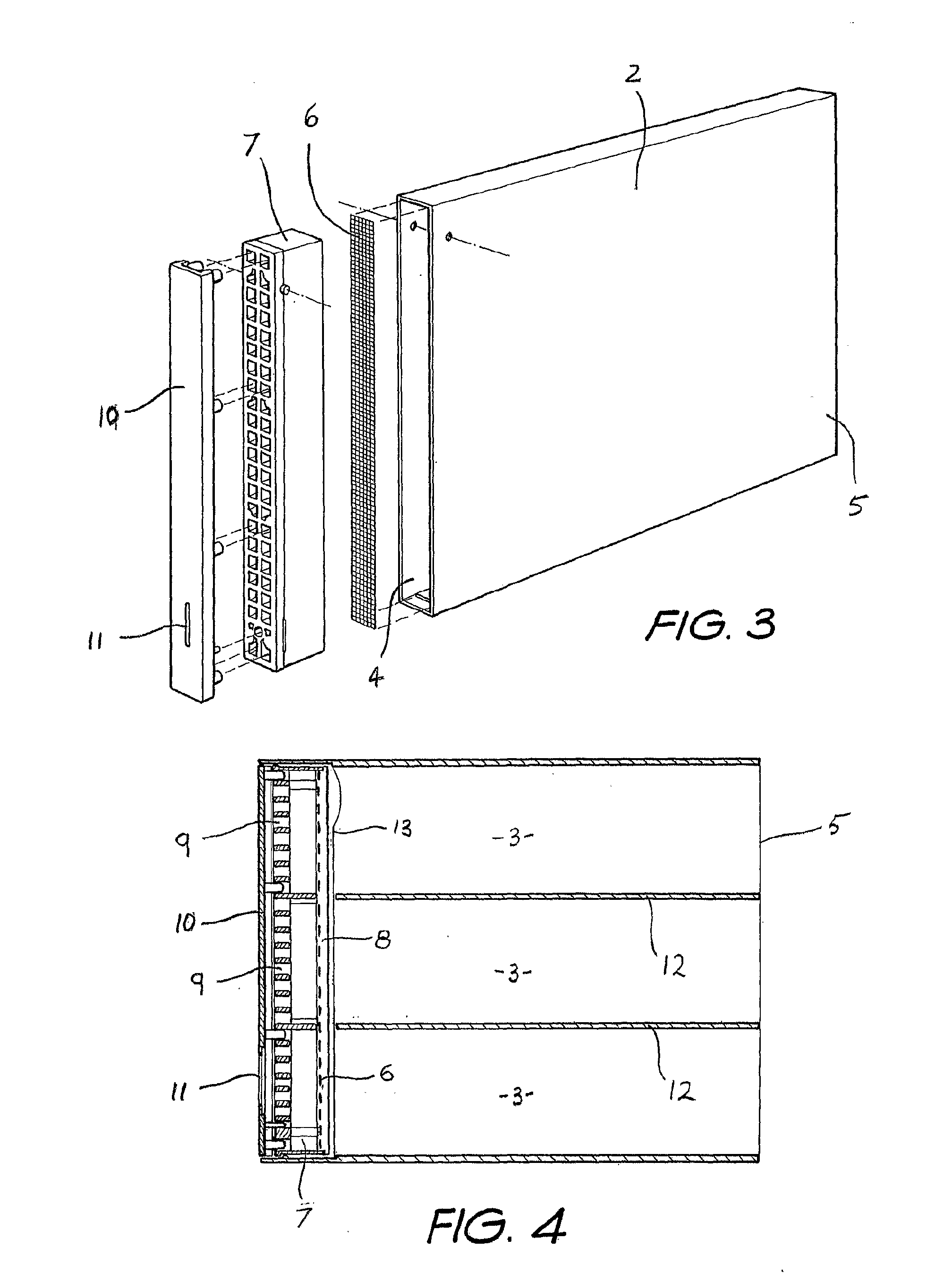Insert for a Weep Hole Opening in a Masonry Wall
a weep hole and masonry wall technology, applied in the direction of roof tools, building components, animal husbandry, etc., can solve the problems of reducing the life of the structure, grating cannot be installed, and not allowing easy access to or inspection of the wall cavity
- Summary
- Abstract
- Description
- Claims
- Application Information
AI Technical Summary
Benefits of technology
Problems solved by technology
Method used
Image
Examples
Embodiment Construction
[0041]Referring to FIGS. 1 to 4 of the drawings, there is shown an insert 1 for a weep hole opening in a masonry wall. The insert 1 includes a hollow body 2 defining an air flow conduit 3 and including a first open end 4 and a second open end 5. A stainless steel mesh screen 6 extends across the conduit 3 near the first open end 4 and is adapted to prevent fire brands and sparks from passing through the body 2 and to absorb heat from the fire brands and sparks. The screen 6 includes cells of about 0.45 mm×0.45 mm. A locating member, in the form of a grate 7, is hingedly connected to the body 2 adjacent the first open end 4. The screen 6 is located in a recess 8 in the rear of the grate 7 and friction between the screen 6 and the grate 7 retains the screen 6 in the recess 8. The grate 7 is formed from a material that substantially retains its spatial integrity when exposed to the heat flux profile generated by a typical forest fire, such that the grate 7 continues thereafter to locat...
PUM
 Login to View More
Login to View More Abstract
Description
Claims
Application Information
 Login to View More
Login to View More - R&D
- Intellectual Property
- Life Sciences
- Materials
- Tech Scout
- Unparalleled Data Quality
- Higher Quality Content
- 60% Fewer Hallucinations
Browse by: Latest US Patents, China's latest patents, Technical Efficacy Thesaurus, Application Domain, Technology Topic, Popular Technical Reports.
© 2025 PatSnap. All rights reserved.Legal|Privacy policy|Modern Slavery Act Transparency Statement|Sitemap|About US| Contact US: help@patsnap.com



